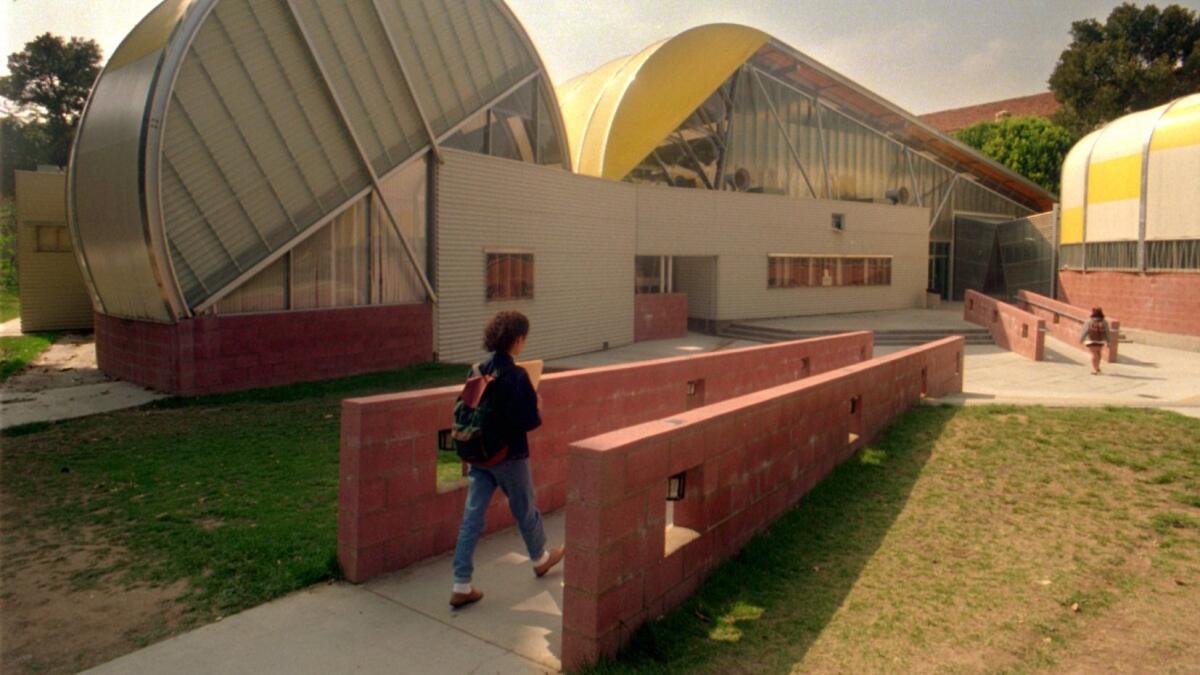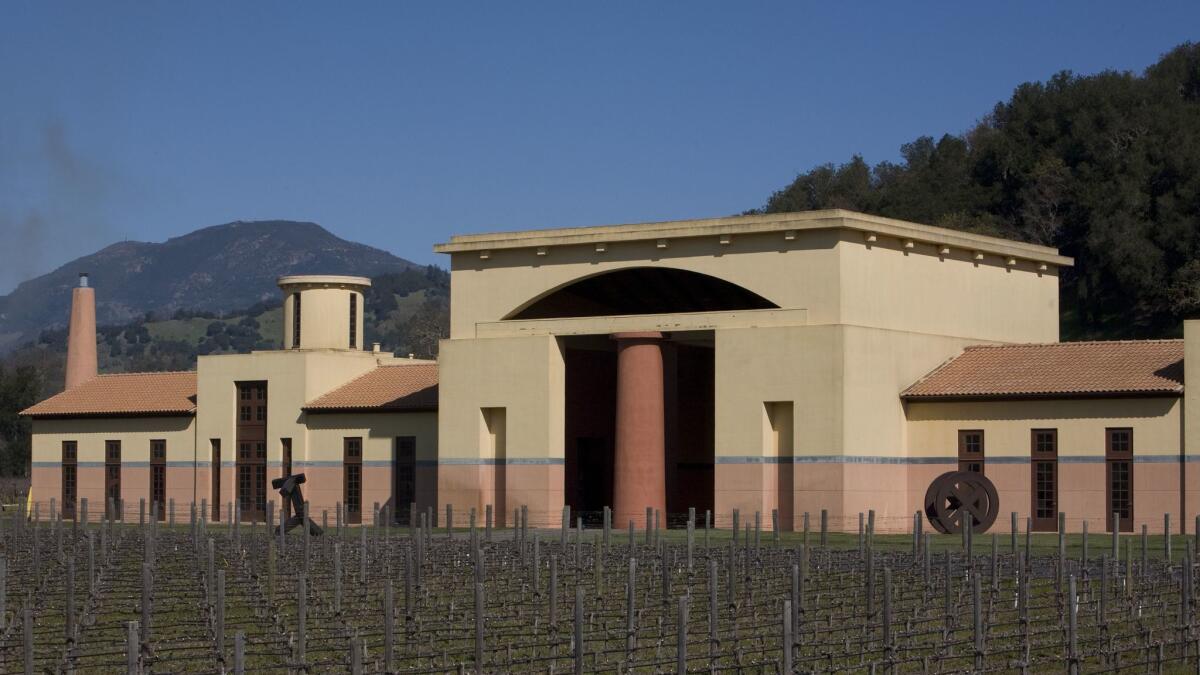Architecture is facing its own award-season controversy

Architects, like journalists, are fond of giving themselves awards. Then there are the outside organizations — Pritzker, Curry Stone and Driehaus, to name three — whose main reason for being is to hand out design prizes. Nobody is interviewing architects on any red carpets, but the laurels pile up.
For the most part architecture’s awards season proceeds with significantly less attention and controversy than Hollywood’s. This year is a bit different, though, thanks to the announcement earlier this month that the American Institute of Architects would not be giving out a Twenty-Five Year Award for 2018.
The Twenty-Five Year Award is the most consistently surprising and meaningful award in architecture — one that architecture critics actually look forward to hearing about every year.
The award celebrates a building completed between 25 and 35 years ago — specifically, in the words of the AIA, one inventive or influential enough to “set a precedent.” Sometimes it honors a complex of buildings: the first award, in 1969, went to Rockefeller Center. As long as it was designed by a firm licensed at the time to practice in the United States, the building can be located anywhere. Recent winners include I.M. Pei’s glass pyramid at the Louvre, Harry Weese’s design for the stations of the Washington Metro and Renzo Piano’s Menil Collection gallery in Houston.
What the 25 Year Award does is simultaneously celebrate a particular building and give us a peek into the state of architecture culture.
What makes the award so fascinating — and in the end so culturally and politically significant — is that it pulls a work of architecture from the shadows of inattention. Buildings completed in that time frame are precisely those we have begun to forget about or undervalue.
What the 25 Year Award does is simultaneously celebrate a particular building and give us a peek into the state of architecture culture when that building was completed. To be specific, it reminds us how the first (the building) changed the second (the culture). That’s where the “precedent” phrase comes in. This is an honor meant to recognize turning points.
The award is also meaningful for honoring a building as opposed to a career-long body of work, as the Pritzker and Driehaus do. It has become commonplace for critics to write about every topic related to architecture except the individual building, focusing instead on urbanism, climate change or the politics of housing. I’ll certainly continue to write about all those subjects. But there’s lot to be said for a prize that focuses our attention on the building as a crucial fulcrum of experimentation and progress.
The award is not perfect. The jury picks the winner each year from a pool of buildings that for the most part have been nominated by the firms that produced them. This means big, successful offices with healthy marketing and public-relations staffs have outsize success. Skidmore, Owings and Merrill has won the award six times, most recently for the firm’s 1981 airport terminal in Jeddah, Saudi Arabia.
That nominating process seemed to be part of the problem this year. The eight-member jury (all practicing architects) simply couldn’t agree that any of the nominated buildings was deserving, which may have been because the pool was small. In a statement, the AIA said jurors “felt that there were submissions that appeal to architects and there were those that appeal to the public. The consensus was that the Twenty-five Year Award should appeal to both.”
In a way this indecision is hardly shocking. The 1980s and early ’90s were a transitional period in architecture and in some ways a fallow one. Post-modernism was enjoying an unsteady reign in those years. Having finally toppled corporate modernism — and thus having been robbed of a villain to help inspire new work — the movement was having trouble figuring out what kinds of landmarks to produce on its own terms.

At the same time, those 10 years saw the rise of emerging talents including Steven Holl, Michael Graves and many others. And it was a particularly vital time in Los Angeles architecture, which is one reason you’ll see so many Southern California projects on the list I’ve put together below.
Whatever we make of the decade in question, I think the award is important and anticipated enough that the jury ought to have tried harder — ought to have asked for more time or for the ability to choose a building that hadn’t been nominated. Or even to bend the rules a bit, making demolished or temporary buildings eligible. (You’ll see examples of both on my list.) The importance of the Twenty-Five Year Award, after all, seems all the more obvious in a world of hot takes and constant churn.
In that spirit I set a challenge for myself: Could I come up not just with one but with 25 buildings that might have deserved the award this year? It took me a few days — and I was helped by some terrific suggestions from architects, critics and historians on Twitter and elsewhere online — but in the end finding 25 wasn’t that difficult.
Once I’d settled on the group of 25 I set myself the further challenge of trying to rank them in order of their suitability for the award, with the best candidates first. Some of these buildings are more important for their effect on the profession than their quality or execution in material terms; in other cases the reverse is true. Here’s my list:
Temporary Powell Library, UCLA, Hodgetts & Fung, 1992 (dismantled 1997); Oriole Park at Camden Yards, Baltimore, HOK Sport, 1992; restoration of Majestic (now Harvey) Theater, Brooklyn Academy of Music, Hardy Holzman Pfeiffer, 1987; Hayden Tract, Culver City, Eric Owen Moss, begun 1986; Hollywood Duplex, Los Angeles, Koning Eizenberg, 1987; Temporary (now Geffen) Contemporary, Los Angeles, Frank Gehry, 1983; San Juan Capistrano Library, Michael Graves, 1983; AT&T Building, New York, Philip Johnson and John Burgee, 1984; Donald C. Tillman Water Reclamation Plant & Japanese Garden, Los Angeles, Anthony Lumsden/DMJM and Koichi Kawana, 1984; Berkowitz-Odgis House, Martha’s Vineyard, Steven Holl, 1988 (demolished 2014); Thompson Center, Chicago, Helmut Jahn, 1985; Kate Mantilini Restaurant, Beverly Hills, Morphosis, 1986; Patscentre, East Windsor, N.J., Richard Rogers and Partners, 1985; Moore/Andersson Compound, Austin, Texas, Charles Moore and Arthur Andersson, 1992; Loyola Law School, Los Angeles, Frank Gehry, 1984; Clos Pegase Winery, Calistoga, Calif., Michael Graves, 1987; Children’s Museum of Houston, Robert Venturi and Denise Scott Brown with Jackson & Ryan Architects, 1992; High Museum of Art, Atlanta, Richard Meier, 1983; Fire Station No. 5, Columbus, Ind., Susana Torre/the Architectural Studio, 1987; Metro Blue Line, Los Angeles, 1990; Goldberg Bean House, Los Angeles, Franklin D. Israel, 1991; Humana Building, Louisville, Ky., Michael Graves, 1985; Vitra Design Museum, Weil am Rhein, Germany, Frank Gehry, 1989; Centennial Complex, Laramie, Wyo., Antoine Predock, 1993; 599 Lexington Avenue tower, New York, Edward Larrabee Barnes, 1986.
SIGN UP for the free Essential Arts & Culture newsletter »
Twitter: @HawthorneLAT
More to Read
The biggest entertainment stories
Get our big stories about Hollywood, film, television, music, arts, culture and more right in your inbox as soon as they publish.
You may occasionally receive promotional content from the Los Angeles Times.











